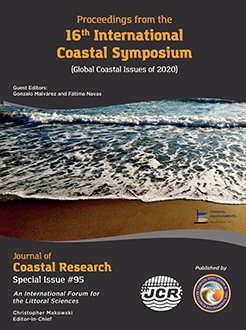Chen, W.; Mao, C.; He, L., and Jiang, M., 2020. Sea-level rise impacts on the saline water intrusion and stratification of the Yangtze Estuary. In: Malvárez, G. and Navas, F. (eds.), Global Coastal Issues of 2020. Journal of Coastal Research, Special Issue No. 95, pp. 1395-1400. Coconut Creek (Florida), ISSN 0749-0208.
Saline water intrusion is the movement of saline water into freshwater areas. The problem of saline water intrusion has been regarded as one of the most important issues in managing coastal zones, as it can significantly degrade drinking water and sediment flocculation. In this paper, a 3D numerical model of hydrodynamic and salinity transport of the Yangtze estuary was established based on MIKE3. This model was validated with the field measured tidal level, flow velocity, flow magnitude and salinity. The validated model was used to simulate the saline water intrusion caused by sea level rise (SLR) in the Yangtze estuary in the dry season. The responses of saline water intrusion to SLR in the Yangtze estuary were analyzed. Results indicate that: salinity in the upper reach of the North Branch, the South Branch, the North Channel, the South Channel, the North Passage and the South Passage increase due to SLR, especially the salinity of the South Branch entirely exceed 0.45 psu, however decreased significantly in the lower reach of the North Branch. This is induced by the increased flow split ratio of the North Branch due to SLR. The greater flood tidal current and flow split ratio of the North Branch due to SLR make stratification phenomenon of salinity increase with the Richardson number reaching 150 in the middle layer. For the South Passage, the bottom stratification phenomenon is weakened and the surface stratification phenomenon is enhanced, however the vertical trend is not apparent.





